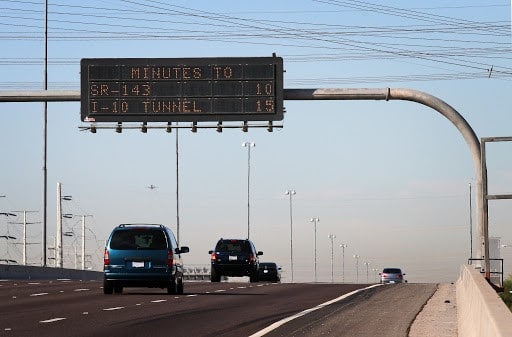
I remember near the beginning of my career when I was discussing the “new” term being used to describe the integration of technology into the operation of roads – “Intelligent Transportation Systems” (ITS), with an older, I mean more seasoned, colleague.
Before ITS came about, the main term of art had been Intelligent Vehicle Highway Systems (IVHS). He stated, somewhat presciently, that the first part of the new term, “Intelligent -” would likely be soon applied to everything. Intelligent roads, intelligent signs, intelligent sensors, etc. In many ways this has already come to pass and as the Internet of Things continues to grow seemingly exponentially we will continue to rely on better intelligence and better communication of that intelligence. This is crucial as we can no longer rely on our old solutions to address congestion.
It is now generally accepted that we can no longer build our way out of our increasing congestion issues. Between latent demand, increasing land values and ever shrinking construction budgets, agencies everywhere are being forced to do more with less. And this doesn’t even take intoaccount the looming cloud of possible impacts from autonomous vehicles (AV):
- Will ghost trips and AV ease of use increase vehicle miles traveled (VMT)?
- Will they free up valuable urban real estate (think parking) for re-development?
- What happens during the interim period (which could last decades) when we have only partial AV penetration?
Whatever happens two things seem certain; technology will continue to develop and be adopted at an increasing pace, and data will become more and more important to short and long term decision making. Indeed, many agencies now say data is as important as tangible infrastructure. Better and more complete data sets allows for better information on which to base decisions, whether that be which roadway to route motorists on after an incident, or using trend data to make better investment decisions.
Transportation agencies, like consumers, have become savvier in their technology purchases. While they are trying not to over-commit to a given technology for fear of its obsolescence tomorrow, the need to stay current and make the most efficient use of taxpayer money is a key motivator in adopting new technologies and techniques. Just as there is never a “good time” to buy a computer or a smart phone as they are always improving, agencies at some point need to make the decision to invest in something.
At INRIX we like to feel we are in a unique position at the crossroads between automobile manufacturers and public sector agencies. Both groups want data that the other one has and INRIX seeks to manage the complexities of collecting, refining and providing that data back to both public and private sectors in the format they need. This is a win-win as companies benefit from taxpayer funded data collection strategies long operated by the public sector, and the public sector can get access to data which otherwise may be difficult or impossible to acquire by other means.
INRIX is announcing this week that we will be working with both the Arizona and Michigan Departments of Transportation to provide data to better monitor, operate and plan for their systems.
Our real-time data will be used by ADOT to populate travel times on their statewide message signs to better inform motorists within the state. ADOT will also utilize our historical and origin-destination data to improve modeling and planning for future roadway improvements.
MDOT will also be making use of INRIX real-time traffic data integrated in the state operations ATMS system and archival data for system-wide performance assessment, including developing a new Michigan Mobility Report based on collaboration between MDOT, Wayne State University and INRIX.
As I am now “the more seasoned colleague” I look forward to seeing what new term of art comes to the fore in the near future as the industry continues to move forward and utilize technology and data to make our transportation systems more efficient, safer and, dare I say, intelligent. While Uber and others may be promising AV flying vehicles in the near future, I think we have a long way to go, and many technical, safety and societal problems to solve before we achieve the future envisioned in the Jetsons from my childhood.





